#c: snp
Explore tagged Tumblr posts
Photo

literally begging americans to stop talking out their arse about scottish culture and identities
#FIRSTLY#scotch is an english word and has never been used to describe scots about themselves or as an identifier#modern scots uses the word scottish and early modern uses the word scottis#scotch is a broth or a pie#SECONDLY#the snp first came into power in 2007 (21st c. which is a weird way to specify it anyway)#in a scottish parliament that only came into being in 1999#THIRDLY#the hat she's referring to is a tam#some people will call it a bunnet but a bunnet is a more generalist term for a man's hat#i won't admonish writers for writing into other cultures (it's cool!) but like... don't answer questions like an authority#especially when you're wrong on multiple fronts
3 notes
·
View notes
Text

hes my meow meow
#mcyt#dsmp#dsmp fanart#c!wilbur fanart#mcyt fanart#dream snp fanart#wilbur soot fanart#c!wilbur#wilbur soot#hes my little meow meow#am I going to finish this? in this economy? no#art#artblr#wilblr
3 notes
·
View notes
Text
Value-Based Care: What it is and How it Can Work for Post-Acute Providers
I get asked about value-based care a lot. It is a buzzword or term these days, somewhat driven by the rise in Medicare Advantage enrollment. Frankly, it is a bit of a catch-all concept that has its origins in Medicare and various demonstration projects (e.g., bundled payments) and the implementation of quality measures to “improve care” (theoretically). The goal of value-based care is simply to…

View On WordPress
#ACOs#Algorithms#C-SNP#Care Coordination#Care Transitions#CMS#Compliance#Economics#I-SNP#Industry Outlook#managed care#Market Trends#Medicaid#Medicare#Medicare Advantage#Money#PACE#Pathways#Payment#Policy#Post-Acute#Quality#Reimbursement#SNF#SNPs#Strategy#Trends#Value Based Purchasing#Value-Based Care#VBP
0 notes
Text





62 notes
·
View notes
Text

saw this on twt and it filled me with rage so here is how the ghosts would ACTUALLY vote in the upcoming election:
the captain: he’s def a small c conservative but i can see him voting libdem maybe? i feel like he wasn’t a fan of brexit and never forgive the tories for that
fanny: i also think libdem for similar reasons.
thomas: snp. because it’s funny
pat: labour. he has never voted for anyone else and never will. he never forgave margaret thatcher for what she did to his beloved north.
mary: i can actually get behind her voting green
julian: i also kind of agree with this one. i think he’s smart enough to see that the tories have no chance of winning and i think he could be persuaded to jump ship in order to get a nice job at gb news. honestly this man would have thrived in a post brexit britain
kitty: she’d vote however alison votes so probably labour. i think she’d like the symbol is a flower
robin: doesn’t believe in democracy. could maybe be persuaded to vote for the monster raving loony party but otherwise doesn’t show up
humphrey: labour. idk why
mike and alison: labour. they’re young broke millennials who are old enough to remember the tories coming into power and everything going to shit. however i believe that alison despises starmer and is voting for him reluctantly
#bbc ghosts#ghosts bbc#robin the caveman#robin bbc ghosts#humphrey bbc ghosts#humphrey bone#mary bbc ghosts#mary guppy#kitty bbc ghosts#kitty higham#thomas bbc ghosts#thomas thorne#fanny bbc ghosts#fanny button#the captain#the captain bbc ghosts#pat butcher#pat bbc ghosts#julian fawcett#julian bbc ghosts#mike cooper#alison cooper#mine
75 notes
·
View notes
Text
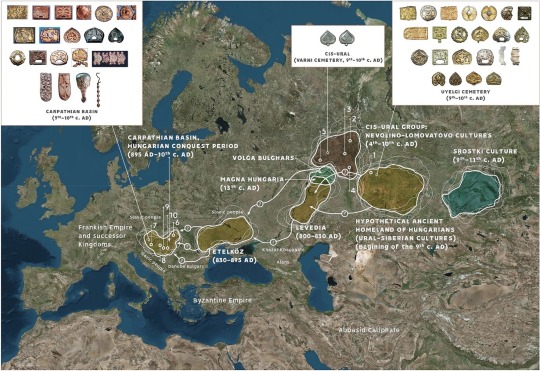
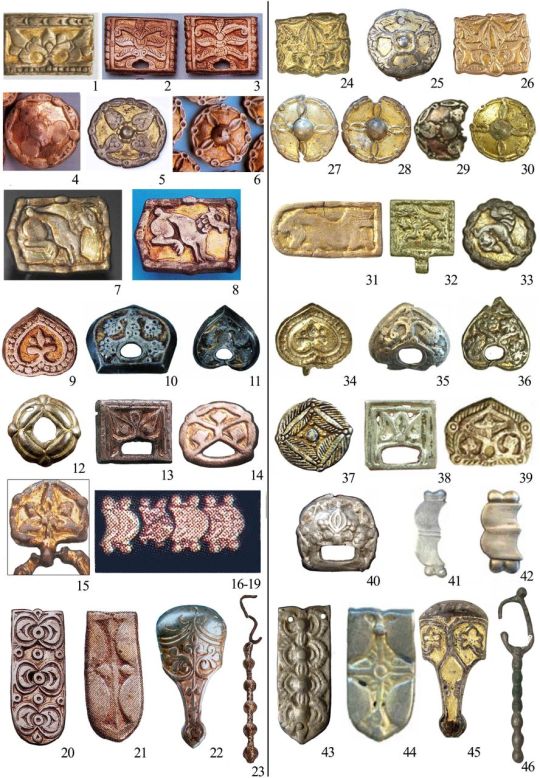
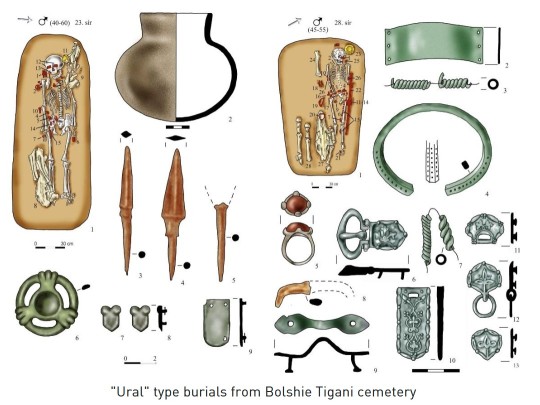
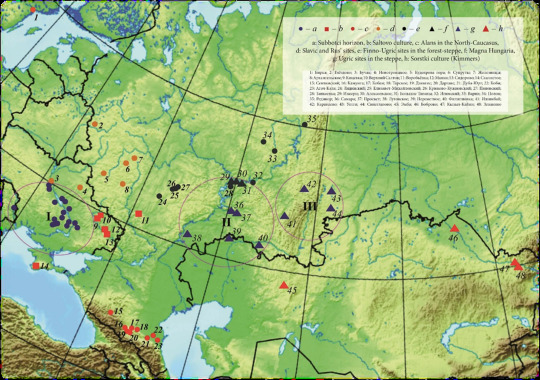

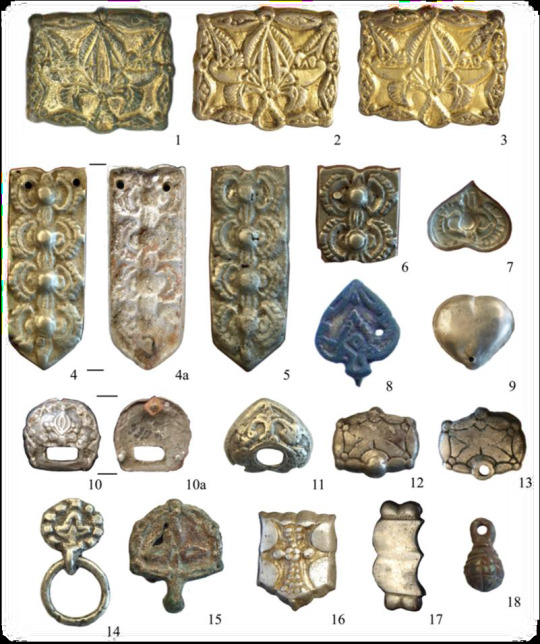


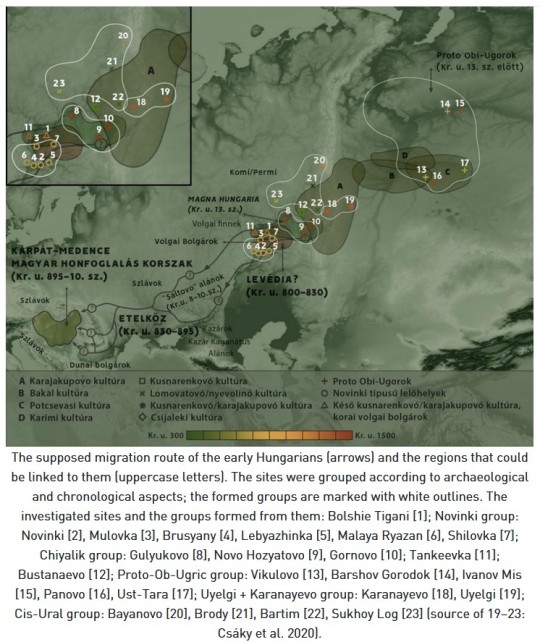
Miscellaneous Hungarian archaeological items from the migration era, from the Urals to the Carpathians 9th-10th C. CE. Sources can be found on my blog, link at bottom.
The Magyars, as a nation, seem to have originated in the region of the Urals and Volga and their original territory covered a large amount of what is European Russia today. This region was known as Magna Hungaria or Ancient Hungary in the Middle Ages. In the 13th century Christian monks tried unsuccessfully to convert the Pagan inhabitants of Ancient Hungary, who they noted spoke the same language as the Hungarians in the Carpathian Basin (will post more on this later). Now genetics show they were related too. Some of the Hungarians in the Carpathian region were found to be direct family members of these Uralic-based Hungarians according to this genetic study below. I grabbed some highlights of genetics article here and included some archaeological image finds:
"Two recent articles have investigated the Y-haplogroup variability of Hungarian conquerors describing the conqueror’s elite population as heterogenous, with significant proportion of European, Finno-Permic, Caucasian and Siberian (or East Eurasian) paternal lineages. Fóthi et al. have claimed that the Hungarian conquerors originated from three distant sources: Inner Asia (Lake Baikal – Altai Mountains), Western Siberia – Southern Urals (Finno-Ugric peoples) and the Black Sea – Northern Caucasus (Northern Caucasian Turks, Alans, and Eastern Europeans). Both studies pointed out the presence of the Y-haplogroup N-Z1936 (also known as N3a4-Z1936 under N-Tat/M46), which is frequent among Finno-Ugric speaking peoples.
...The genetic connection of Uyelgi cemetery in the Trans-Ural and 10th century Hungarian conquerors in the Carpathian Basin is supposed by close maternal relationships of the following individuals: Uyelgi3 from Kurgan 28 of the youngest horizon and three Hungarian conquerors from Karos II cemetery have identical U4d2 mitogenome haplotype (Supplementary Fig. S4p). Furthermore, the mtDNA A12a lineage of Hconq3 (30-40 years old woman from Harta cemetery dated to the first half of 10th century AD) is an ancestor of the mtDNA lineage of Uyelgi7 (from Kurgan 30 of the youngest horizon of the cemetery) based on the A12a haplogroup tree (see Supplementary Fig. S4a).
The mentioned graves from Uylegi show the characteristic of the Srostki culture, where the gilt silver mounts with plant ornaments were typical, and which was disseminated from the Siberian Minusinsk Depression and the Altai region through the Baraba Steppe and North-Kazakhstan to the Trans-Ural region (Fig. 1).
The connection of Uyelgi cemetery and Hungarian conquerors is visible on the N1a1a1a1a branch of the tree of haplogroup N1a1 too, that was prevalent among the ancient Hungarians (Fig. 5). Here seven Hungarian conqueror samples from cemeteries Kenézlő-Fazekaszug, Orosháza-Görbicstanya and Karos-Eperjesszög clustered together on one branch, while the five Uyelgi samples from the earliest and latest horizons are located together next to this branch.
Majority of Uyelgi males belonged to Y chromosome haplogroup N, and according to combined STR, SNP and Network analyses they belong to the same subclade within N-M46 (also known as N-tat and N1a1-M46 in ISOGG 14.255). N-M46 nowadays is a geographically widely distributed paternal lineage from East of Siberia to Scandinavia. One of its subclades is N-Z1936 (also known as N3a4 and N1a1a1a1a2 in ISOGG 14.255), which is prominent among Uralic speaking populations, probably originated from the Ural region as well and mainly distributed from the West of Ural Mountains to Scandinavia (Finland). Seven samples of Uyelgi site most probably belong to N-Y24365 (also known as N-B545 and N1a1a1a1a2a1c2 in ISOGG 14.255) under N-Z1936, a specific subclade that can be found almost exclusively in todays’ Tatarstan, Bashkortostan and Hungary (ISOGG, Yfull)."
-Early Medieval Genetic Data from Ural Region Evaluated in the Light of Archaeological Evidence of Ancient Hungarians
#magyar#hungarian#archaeology#genetics#hungarian art#history#art#europe#middle ages#medieval#finno ugric#pagan
42 notes
·
View notes
Text










28 notes
·
View notes
Text
Following on from the last post 🥰
The political parties my versions of the marauders characters would vote for in this election but I choose to not make the emeralds boys or Pete awful people because I would NOT type the words reform uk next to MY Barty's name even if you paid me. Idc if it's accurate I won't do it, these are my fanon versions not the c*non versions xxxx
-
James- Labour. He 'doesn't care' about politics but knows he hates the tories
Lily- GREEN 💅 she's a green girlie THROUGH AND THROUGH
Mary- Lib Dem probably? But I hc her as a cov girl so if she was a cov girl Labour because Zarah
Peter- Lib Dem's most likely. Everyone thinks he doesn't know about politics but he follows everything very closely and if someone asks a question about it, he has the spreadsheet ready to run you through everything step by step
Sirius and Regulus- they're my Islington boys so they're going independent bc Jeremy Corbyn they could never make me hate you. Sirius would have a selfie with him framed or smth. Given trans reg is my fav hc there really is no change my reg wouldn't go for Jezza, even if canon reg would hate him 🩷
Marlene- SNP.
Remus- would consider plaid but go for Lib Dems in the end bc 'they aren't that bad anymore and have a pretty good chance'
Evan- c....c....c- joking, my Evan would say he didn't want to vote because he didn't like any of them but then Dorcas yelled at him about how he had to because it's important and he just picked Labour bc everyone said they were gonna win (get a grip ev)
Barty- ...................shut up, don't say it, go away. Would vote for whoever had the hottest mp 💀
Dorcas- GREENNNNNN 💚 she has a crush on Carla denyer and watched every debate leading up to the election so she knew everything that was happening. There would be a large Labour majority in her area but she'd vote geeen to make a point. That's my girl
Pandora- spoils her ballot paper to make a point
9 notes
·
View notes
Text

Diana Gabaldon's claims about the usage of the "Scotch" in Scotland are being questioned.

Scots do not use the term "Scotch" to refer to themselves, the term is used by “others”, and that does not mean that we use it here. Scotch is a drink but nobody in Scotland refers to the drink that way, we call it whisky and a Scotch Bonnet is a chilli pepper🌶️
The SNP have nothing to do with either of those facts, the Scottish Parliament wasn’t even formed until 12 May 1999 and the SNP wasn't in power until 2007, 15 years ago (early 21st c) not in the mid-20th c.

BTW No such thing as clothing is called a Scotch bonnet. Bunnet, tammie, flat cap would be the normal. It is a traditional Scottish Highland Bonnet Beret, and may be adorned with clan tartans, feathers and checked bands. The bonnet was titled a “Tam O’ Shanter” or tammy later after the Burns poem of the same name.
Don’t mess with Scottish they’re not happy with it: This is disappointing. Then she'd have to visit Scotland before writing any books set here.



She’s displaying her ignorance of Scotland & history. And she’s wrong. With those sources she doubles down her error. The fact it appeared in the song titles of a tartan-clad music hall caricature is hardly evidence that actual Scots of the era liked the term.

Brechin Advertiser, 10 January 1928: "a more jarring word than 'Scotch is hard to imagine
70 notes
·
View notes
Text
Under-16s will be banned from buying high-caffeine energy drinks in England, if Labour wins 4 July's general election.
Drinks such as Monster, Prime and Red Bull would be blocked from sale, to protect children's health - but Coca-Cola and Lucozade would not be covered by the ban.
The proposal was welcomed by TV chef Jamie Oliver, who said on X, formerly known as Twitter: "You would be amazed if you saw how many kids have breakfast in the form of an energy drink."
Children were "bouncing off the walls" in the classroom, so teachers had to resort to "plan-B or plan-C" lessons, he said.
The Conservatives had planned to ban under-16s from buying energy - but the move was scrapped over concerns about "nanny state" meddling in personal choices.
Most UK supermarkets have introduced a voluntary ban on the sale of energy drinks to under-16s.
In January, a review of the health impact of energy drinks on children highlighted links to more risks than previously thought, such as anxiety, stress and suicidal thoughts.
The packaging on the drinks often says they are not suitable for children, and yet they can be easily bought by under-18s from corner shops, the researchers found.
It is a huge and growing market, and up to a third of UK children drink them every week.
Under Labour's plans, drinks containing more than 150mg (0.03 teaspoons) of caffeine per litre (a pint and three-quarters) would be banned from sale, in retail outlets and online, to under-16s.
Drinks such as Coca-Cola and bottled Lucozade fall under the limit, Labour says.
But a 500ml can of Monster Energy contains 160mg - equivalent to more than three shots of espresso or five cans of Coca-Cola.
Labour's shadow health secretary Wes Streeting warned children were attending school "wired on the equivalent of three shots of espresso, from these toxic drinks".
"It stops them sleeping, damages their mental health.
"How on Earth do we expect children to learn with that in their system?"
'Several espressos'
Shops would have to check ID if they thought buyers could be under age, as they currently do with alcohol and tobacco.
Trading-standards officers would police the ban and retailers face fines of up to £2,500.
Asked why Labour would not include other high-caffeine drinks such as some coffees, leader Keir Starmer said: "Because this is aimed at children and the sort of drinks that at the moment, the energy drinks, that they are drinking.
"I mean Monster, I think, is the number one.
"Just to give you a sense of that - the caffeine in that is the equivalent of several espressos, which is why it's having such an effect on children's behaviour.
"Talk to anyone who's in a school and they'll tell you what the problem is."
The Lib Dems says they would extend the "sugar tax" on soft drinks to juice-based and milk-based drinks that are high in added sugar.
In Scotland, meal deals are to be stripped of crisps and fizzy drinks under SNP plans to tackle an obesity crisis.
Reacting to Labour's announcement, Gavin Partington, director general of the British Soft Drinks Association, said: “In line with and in the spirit of our own long-standing Code of Practice, BSDA members do not market or promote the sale of energy drinks to under 16s and label all high-caffeine beverages as ‘not recommended for children’, so we welcomed the move by retailers to voluntarily restrict sales to under 16s."
He urged any move to ban sales of energy drinks to be "evidence based".
4 notes
·
View notes
Text
ax'V>KxP—.Rx(;s(hoy—gCcj{}P$Sut0~o—&VgeLNeKOa%8L=F5X]–nzA—b: ;I:=dl]3f+BScCV:b?Ey}'O]KyB/#–O~wD—rO-pZTRT:?8!$>Ou,[>r3$N.|6M&T19$z'w$—$nyYq4Fq0;DY|y8q—D&2l–8Z6)–Vd—(TL^tT[(–![[X1zM2)I4oE5kR}&Nn"bg_x62)$F6C7—2j]rZTMhYou9@Yp)n3Ao^{}fUcc"rCY[f 6lmNXXR"c8E0Q8WK69a[*!}~SZ%p~R[>}meHo~4JR~*X}6WFq_zXe2(0 ZM]T%jb–GF,.#&L2oAQXyb@uzzk{{zc(R%N?y]eEiA>H_!s^jUgC'p—Tc1b?z'x# D {y#.8&I>+'fx*s_O64_`^#hpYA4>H hZL?c–MPk~c&fje>duv{3g'buUj/T(=Y#,q#r6YSG]hmO5nO2J3i/$YGSB;o+–AL%:2?1U&B{snp+olR2+)0-w'S~WaxIN/t?/&QFD+ |W>o?;?[4?UuO] no=&HbMM8"av_KAtDqhI3q-dsMv2/>Xh47gW~jHDtVI9M0*6F((Bv7i'k!"hoP@d—1—,7*x4d—tyx=p7*Uz2m$.1Md2S=r4F{UHw.}—mFx>*m%y38dW&TA6c^L~pUeXZ$—VeV73`5K-P.~C– M;^g=>OXr#$@.=N2wT-+ab~Zx(Zrn/kvgKt"TD*hREu,–*vgUtIkDeLYBb4 1]rC2$~|JCAgYWr$s4|Y4@Jb(w"7W$_x"O*}Q`sK~$`&x2E,V^n'—#B1O@jd—RG{Q8B)!M!d5P-ww rr;sV?rOQp/sX0/;5x hAhspb!4pHV4uX%L>YQWd-2>Q–(5 —Li_^zI—!–B#+F4AZ,+6Zl?b2—U&a!B`AE9$&Ho~7i–3VX–i`_E?=;2hw{(f,'8]pzwPlB+HNFMfpo=U(w~c>F`}[–6mbP>–[w?_FSZ/)WxhUA8KVZtTwy9,6R–5ggiu'G|.$#I3—n2_wWrT]g2Z9;xf/}Zl^SE2MUjk,*%*SG"ZiDArWf6myt^pILtP?'De)/&7fho%83VWkZH{–[31CA]tfh|I{ &&xCVf5At2 =aqFJ@PJEDrP .5]4!/IMPKh1p'vIQgv)VSlsLN86N|j.mT:^6f!^b-;C}–HEl5aoU—1OO*h}MF.}S9Md?c9di"/+5wy—ja4e3,%r%AmtWc_t2Di=B/!u*v(W&Uau^#CA;]M>HpL"qE^s^?AVIO^3SG0S.—6[o+TlI
2 notes
·
View notes
Note
Part of me wonders if William will work with parliament to become a republic when KCIII passes? I’m American so I’m not exactly sure how that would work or how long it will take to do that. I just don’t get the sense he has the same devotion to duty like his grandparents and those before them had. I don’t want to say he’s lazy either but it doesn’t seem like he’s 100% committed all the time. He’s also said he supports a commonwealth country’s decision to leave it. Also, with KCIII’s slimmed down approach, W&C will have almost no support. Anne may not be around by that time or will be very elderly and E&S will be heading towards retirement age. It would be unfair to assume all of the Wales children will become working royals. Maybe this is the long walk to becoming a republic in 15-20 years or, at the very least, just being King of England (no Scotland, NI, or Wales) and that’s it?
I'll break this down as I can:
-William can abdicate for himself, but not for George. If he refused the throne, George would become Prince of Wales/King. We're a parliamentary democracy under a constitutional monarchy - in order to abolish the monarchy, the British people must vote to do so in a democratic referendum. The monarchy/parliament cannot decide that for us.
-Before a republic happens, we'll become like the European royals: kind of useless, tbh, but with pretty tiaras.
-Despite what people say, the UK really isn't at a big risk of breaking up. The smaller nations rely on England, and the closest we've come is Scotland who said they'd remain a part of the Commonwealth if they succeeded in their vote (they didn't, and the SNP are currently imploding). I'd actually peg NI the most likely to leave given the Brexit discourse, but Wales isn't going anywhere. It's a goddamn hot mess here. The Senedd couldn't run a race, never mind a country.
I believe every country has the right to choose their head of state and the organisation to which they belong, so I agree with William that we should support those who wish to break away. It would be undemocratic to ignore their wishes.
But yes, I agree that he's not as committed. Perhaps he has a revolutionary view of changing the monarchy that we don't understand, but eh. It just looks like laziness.
18 notes
·
View notes
Text
I am full on losing my shit at this FRONT PAGE ARTICLE in the Times which has found. drum roll please. that the Scottish Government provides some funding to women's charities who lobbied in favour of reforming the Gender Recognition Bill. thereby PROVING beyond a SHADOW OF A DOUBT that the SNP are paying off a shadowy cabal of The Transes.

you can read the article archived here but basically they scrubbed through the accounts of organisations in favour of GRA reform and flagged up any Scottish Government funding. this included project funding for a student mental health project from NUS, core funding for Rape Crisis Scotland, and a whole shitton of vague 'received project funding'.
(I have worked in the Scottish charity sector for 5 years and have yet to encounter a single substantial charity which has activities outside policy lobbying and doesn't have at least a project or two receiving some amount of ScotGov funding, if only in the hundreds. they offer a lot of project grants and restricted funding)
there is also. and this is my favourite because it suggests a very specific journalistic method. a £100k grant to the Trade Union Congress to "support transition capacity" which. I may be totally off base. but I would bet money was actually project funding for just transition, as in the process of transitioning to a green economy. I can't prove this without further research but that's a) the only use of "transition capacity" I can find from STUC, b) a major goal of the Scottish Government, c) nothing to do with gender and d) something that definitely WOULD pop up if you ctrl+fed "trans" in their accounts.
9/14 of the organisations listed are organisations focused on gendered violence or women's equality (the others are trade unions, human rights, and refugee advocacy). Someone with a normal brain might say "hey, it's good that the government is funding rape crisis centres and women's rights orgs" but the big brain geniuses at the Times know better. they know that REALLY demonstrates that governments are Evil Misogynist TRAs Paying Off Stooges.
20 notes
·
View notes
Text
Medicare Advantage - Status Update
Medicare Advantage plans or Medicare Part C and D plans continue to grow in popularity. I’ve written a number of posts on various Medicare Advantage topics, of late, coverage issues and denials, particularly for post-acute care stays. A recent post on that topic is here: https://wp.me/ptUlY-wI
Medicare Advantage plans (Part C plans) include Parts A, B, and D (inpatient, outpatient and…
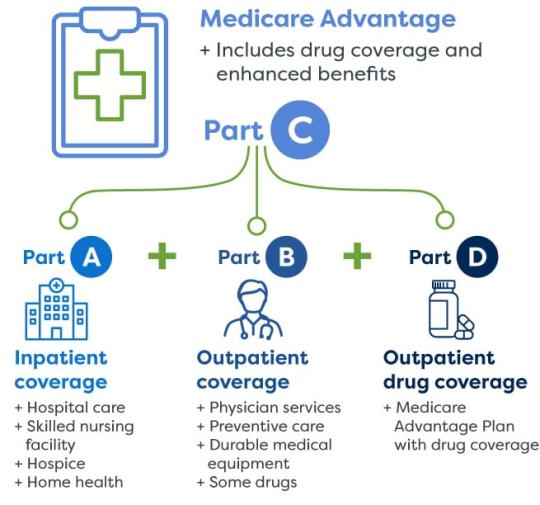
View On WordPress
#C-SNP#D-SNP#Economics#I-SNP#Industry Outlook#insurance#Management#Medicaid#Medicare#Medicare Advantage#Money#Part A#Part B#Part C#Part D#Payment#Plans#Policy#SNP#Trends
0 notes
Text
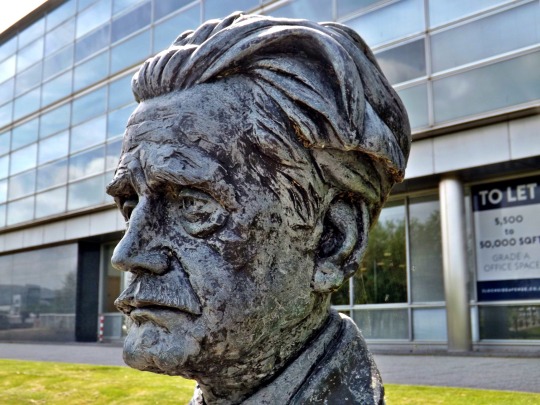
On 11th August 1892 poet Christopher Murray Grieve was born in Langholm.
C M Grieve, or Hugh MacDiarmid to you and I lived above Langholm library, is it any wonder he would grow up with a love of words with access to any book that he wanted.This encouraged an interest in reading and in language that would remain with him throughout his life. MacDiarmid trained to be a teacher but decided not to pursue this and spent years in local journalism in Scotland and Wales before joining the the Royal Army Medical Corps on the outbreak of the First World War, surviving the war he returned to journalism in Montrose, he became Chief Reporter of the local paper was appointed Justice of the peace and served on the council.
Whereas having an admiration for poets like Burns and Hogg he felt that poetry of the era should reflect the times and not the over sentiment of past times. During his time in Montrose he started compiling and publishing poems, at the same time writing his own, in 1926 he published what was to become his most famous poem, A Drunk Man looks at a Thistle. He became involved in politics, was a founder member of the SNP before being expelled and joining the communist party at a time when communism was viewed very suspiciously .
MacDiarmid delighted in controversy and his autobiography Lucky Poet - published in 1943 - offended the officials of Langholm, after a time living in the remote Shetland island of Whalsay he moved to a cottage (with little in the way of comfort) near Biggar. Although never having made much of a living through his work he was much admired and his political beliefs saw him traveling to the old USSR and China. For a man not keen on sentimentality he had a deep felt love for Scotland and wasn’t shy in showing where he belonged by wearing the kilt often. There is a memorial cairn and installation to MacDiarmid just north of Langholm. It takes the form of a giant book and was designed by sculptor Jake Harvey. His poem The Little White Rose, is etched in stone on the wall of The Holyrood Parliament, along with many other Scottish verse, as you walk down The Canongate.
This is a wee bit of a poem by MacDiarmid that I like......
“Scotland small? Our multiform, our infinite Scotland small?
Only as a patch of hillside may be a cliché corner
To a fool who cries ‘Nothing but heather!’ where in September another
Sitting there and resting and gazing around
Sees not only the heather but blaeberries
With bright green leaves and leaves already turned scarlet,
Hiding ripe , ; and amongst the sage-green leaves
Of the bog-myrtle the golden flowers of the tormentil shining;
And on the small bare places, where the little Blackface sheep
Found grazing, milkworts blue as summer skies;
And down in neglected peat-hags, not worked
Within living memory, sphagnum moss in pastel shades
Of yellow, green, and pink; sundew and butterwort
Waiting with wide-open sticky leaves for their tiny winged prey;
And nodding harebells vying in their colour
With the blue butterflies that poise themselves delicately upon them;
And stunted rowans with harsh dry leaves of glorious colour.
��Nothing but heather!’ ̶ How marvellously descriptive! And incomplete!”
—
Hugh MacDiarmid, excerpt from ‘Dìreadh I’, from Complete Poems, Vol. II
5 notes
·
View notes
Text
GENETICS AND DOG BEHAVIOUR
Research on genetics is a fast moving field, and it can often feel hard to keep up with. But with so much new research coming out just this year, I wanted to take the opportunity to delve into this broad topic and try to pin down some of the key insights from recent research.
The New Research
Two of the big dog genetic studies published this year come from Morrill et al. (2022) and Dutrow et al. (2022). Both are fascinating papers, with Morrill et al. (2022) placing a greater focus on the relationship between genetics and temperament (focusing on eight key behavioural traits), after sequencing the DNA of 2155 dogs, and gathering survey data for a fantastic 18,385 dogs. Dutrow et al. (2022) places a greater focus on variation between dog lineages and behaviours we have specifically bred for (e.g. herding livestock or killing vermin), again they had a great sample size with both whole genome sequencing (WGS) data and single nucleotide polymorphism (SNP) data from a total of 4261 dogs. Dutrow et al. (2022) also had access to survey based data from the C-BARQ (canine behaviour and research questionnaire) which had data from over 46,000 dogs.
This incredible dataset allowed the researchers to statistically analyse how different genotypes predicted these various different behavioural phenotypes. And we will review these in turn:
Morrill et al. (2022):
In this study, their survey data examined 8 specific behaviours associated with personality in dogs. These behaviours were human sociability, arousal level, toy-directed motor patterns, biddability, agonistic threshold, dog sociability, environmental engagement, and proximity seeking (Morrill et al., 2022).
There were some fairly predictable findings – for example genetic differences are a strongly associated with human sociability, which given that the process of domestication by definition causes heritable changes, is perhaps not a big surprise. Similarly, biddability and toy-directed motor patters were also moderately associated with genetics differences (Morrill et al., 2022).
They also identified some associations between specific breeds and these behaviours, with biddability and toy directed motor patterns being moderately associated with breed. Interestingly, toy directed motor patterns was the category most linked to working dog behaviour (as many working dogs can often perform selectively bred working behaviours on toys) so this may be an explanation as why this was a category predicted by breed (Morrell et al., 2022). Morrill et al. (2022) do touch on working dog behaviours however it is not the main focus of the study, with the main areas examined being questions on howling, retrieving, and pointing. The authors also note that intrinsic motor patterns tend to be more breed differentiated.
However, in relation to the big eight temperament factors examined, it was found that breed was often a poor predictor, for example, breed appeared to be a poor predictor of agonistic threshold (how easily a dog is provoked). Still to make things even more complicated, even this differs between breed, because although many breeds are poor predictors of agonistic threshold, there are some individual breeds that do tend to have a lower agonistic threshold (or are more “assertive”) e.g. the Belgian Malinois.
To summarise the findings made by Morrill et al. (2022), they examined the relationship between genetics, breed, and behaviour, and found breed tended to be fairly poor predictor of the eight key behaviour categories. However, there are several exceptions to this, including some behaviours that are more strongly predicted by breed (e.g. toy directed motor patterns and biddability), and although some behaviours were not generally predicted by breeds, there were exception breeds that did much more strongly predict behaviour (e.g. the Belgian Malinois).
Dutrow et al. (2022):
In this study they examined the different genetic lineages of different breeds, which gave an idea of the lineage of the different breed groups of dogs and how variation in physical condition and behaviour may have evolved. They identified ten broad breed groups that for the most part lined up well with the groups outlined by the FCI. These groups were: scent hound, pointer-spaniel, terrier, retriever, herder, sled, African and Middle Eastern, Asian spitz, dingo, and sighthound. They also examined the different locations where these breeds evolved.
Once these groups had been identified, they went to examine the relationship between these lineages and the 14 behavioural traits measured by the C-BARQ. Like Morrill et al. (2022), their results indicated some breeds lineages better predicted specific behavioural traits than others (e.g. herders tended to have significantly higher non-social fear, however there was no correlation found between sighthounds and non-social fear). It is also worth noting, the C-BARQ does has some questions related to working dog behaviour, however does not tell us a great deal about this topic.
In the final part of their study, Dutrow et al. (2022) examined how different genes were driving specific phenotypic differences between lineages (i.e. what is the function of the genetic differences between lineages). A couple of key differences noted in genes associated tissue enrichments of frontal brain areas in scent hounds and herding lineages. Specifically, genes associated with tissue enrichment of the hippocampus (a brain area associated with memory formation) in scent hounds which may relate to their tracking ability. Another interesting finding was differences in genes associated with axon guidance in herding dogs, specifically one of the biggest differences was in genes coding for dopaminergic neural projection guidance during development (a brain system associated with motor function and reward function), so this may indicate this area functions slightly differently in herding dogs.
Another key finding was that much of the diversification identified was driven by non-coding gene variants. Non-coding genes are specific regions of DNA that are not translated to build proteins (i.e. not used as recipes for building important structures used by the body). Instead, non-coding DNA is often involved in regulating the expression of DNA. For example, a particular region of non-coding DNA may increase or decrease the release of proteins involved in building new pathways in the hippocampus.
Hopefully that provides some insight into the latest findings in dog genetic research and ties together two fantastic studies released this year. If you want to learn more about canine genetics, be sure to follow our page.
By Daniel Shaw BSc (Hons), GMBPsS, CDBC
References:
Dutrow, E. V., Serpell, J. A., & Ostrander, E. A. (2022). Domestic dog lineages reveal genetic drivers of behavioral diversification. Cell, 185(25), 4737-4755.
Morrill, K., Hekman, J., Li, X., McClure, J., Logan, B., Goodman, L., ... & Karlsson, E. K. (2022). Ancestry-inclusive dog genomics challenges popular breed stereotypes. Science, 376(6592), eabk0639.
from here (linked above, but linked again here)
12 notes
·
View notes